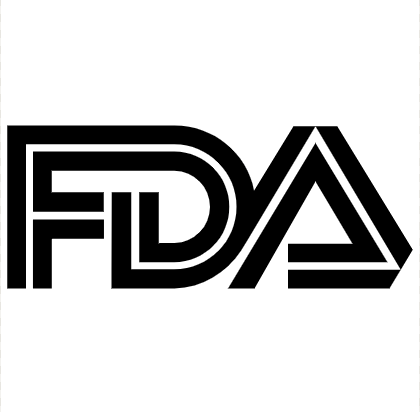Article
Omecamtiv Mecarbil Receives FDA Complete Response Letter for HFrEF
Author(s):
Cytokinetics announced the CRL on Tuesday, as well as their intentions to forego any future clinical trials for the agent while focusing on the development of aficamten.

Cytokinetics has received a Complete Response Letter (CRL) from the US Food and Drug Administration (FDA) for the New Drug Application (NDA) of omecamtiv mecarbil as a treatment indicated for heart failure with reduced ejection fraction (HFrEF), according to the company.1
The company stated in a press release today that the FDA communicated its belief that the pivotal, application-supporting phase 3 trial GALACTIC-HF was not "sufficiently persuasive to establish substantial evidence of effectiveness" in reducing major adverse cardiovascular events in adults with HFrEF.
The FDA further stated in the CRL that additional clinical trial results assessing omecamtiv mecarbil are required to establish evidence of efficacy for this patient population, according to Cytokinetics. The company anticipates they will request a meeting with the agency to review potential steps toward an omecamtiv mecarbil decision.
That said, Cytokinetics expressed plans to forego any additional clinical trials for the investigative drug, and instead keep focus on the clinical development of cardiac myosin inhibitor aficamten for patients with obstructive hypertrophic cardiomyopathy (HCM).
"We are humbled by the support of the heart failure community and will engage with FDA and consider what may be next steps for omecamtiv mecarbil in the US," Cytokinetics president and chief executive officer Robert I. Blum said in a statement. "In parallel, we look forward to continuing a broad development program for aficamten, with expected results from SEQUOIA-HCM and the start of 2 more phase 3 clinical trials later this year.”
The 8256-patient, phase 3 clinical trial, GALACTIC-HF randomized patients with symptomatic chronic heart failure and an ejection fraction of 35% or less in a 1:1 to receive pharmacokinetically-guided omecamtiv mecarbil at 25 mg, 37.5 mg, or 50 mg twice daily or placebo therapy. The trial’s primary efficacy outcome was a composite of a first worsening heart failure event or death from cardiovascular causes, with a first worsening heart failure event defined as hospitalization or urgent visit for heart failure.2
Results of the study, which were published in January 2021, indicated a primary efficacy outcome event occurred among 37.0% in the omecamtiv mecarbil arm compared with 39.1% in the placebo arm(hazard ratio [HR], 0.92 [95% confidence interval [CI], 0.86-0.99]; P=0.03). Results also indicated 19.6% of patients in the omecamtiv mecarbil group and 19.4% in the placebo group died of cardiovascular causes (HR, 1.01 [95% CI, 0.92-1.11]; P = .86).2
Additional safety analyses included in the trial demonstrated 20.6% of those randomized to omecamtiv mecarbil discontinued use during follow-up compared to 21.9% among the placebo group. Investigators pointed out an adverse event was the reason for discontinuation among 9.0% in the omecamtiv mecarbil group and 9.3% in the placebo group.2
The journey to the CRL has been a long and winding road for omecamtiv mecarbil and Cytokinetics, which announced the FDA’s acceptance of the NDA for their selective cardiac myosin activator in February 2022.3
In June 2022, Cytokinetics provided a regulatory update where the company disclosed the submission of additional pharmacokinetic analyses of the agent at the FDA’s request. After review, the FDA communicated the data constituted a major amendment to the NDA and the agency extended the PDUFA date by an additional 3 months from November 30, 2022, to February 28, 2023.4
Before the end of 2022, the FDA CRDAC convened to discuss the benefit-risk profile of the agent. This meeting concluded with a 3-8 vote against the benefit-risk profile of the agent as a treatment for HFrEF. During the meeting, committee members expressed concern over an apparent increase in risk among patients with atrial fibrillation, pointing to a subgroup analysis purporting increased risk of cardiovascular death in these patients.5
“The proposed benefits are small and it appears to me that they are driven in large part by the urgent outpatient visits, not by hospitalization or death,” said Steve Nissen, MD, Chief Academic Officer, Heart, Vascular & Thoracic Institute, Cleveland Clinic.5 “If you look at the heart endpoints, it does not appear that there is much of a benefit.”
References
- Cytokinetics Receives Complete Response Letter From FDA for New Drug Application for Omecamtiv Mecarbil. Cytokinetics. News release. February 28, 2023. https://ir.cytokinetics.com/news-releases/news-release-details/cytokinetics-receives-complete-response-letter-fda-new-drug
- Teerlink JR, Diaz R, Felker GM, et al. Cardiac myosin activation with Omecamtiv Mecarbil in systolic heart failure New England Journal of Medicine 2021;384(2):105-116. doi:10.1056/nejmoa2025797
- Iapoce C. FDA accepts New Drug Application for OMECAMTIV mecarbil for HFREF treatment. HCP Live. https://www.hcplive.com/view/fda-new-drug-application-omecamtiv-mecarbil-hfref. Published January 17, 2023. Accessed February 27, 2023.
- Cytokinetics provides regulatory update for Omecamtiv Mecarbil. Cytokinetics, Inc. https://ir.cytokinetics.com/news-releases/news-release-details/cytokinetics-provides-regulatory-update-omecamtiv-mecarbil. Published June 17, 2022. Accessed February 28, 2023.
- Iapoce C. FDA CRDAC recommends against Omecamtiv Mecarbil for hfref. HCP Live. https://www.hcplive.com/view/fda-cardiovascular-renal-drugs-advisory-committee-nda-omecamtiv-mecarbil. Published December 13, 2022. Accessed February 27, 2023.





